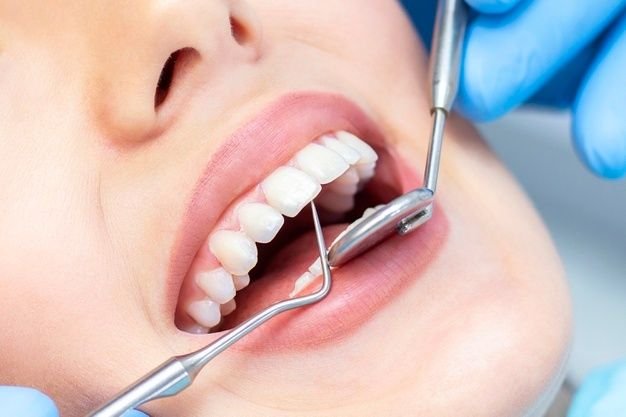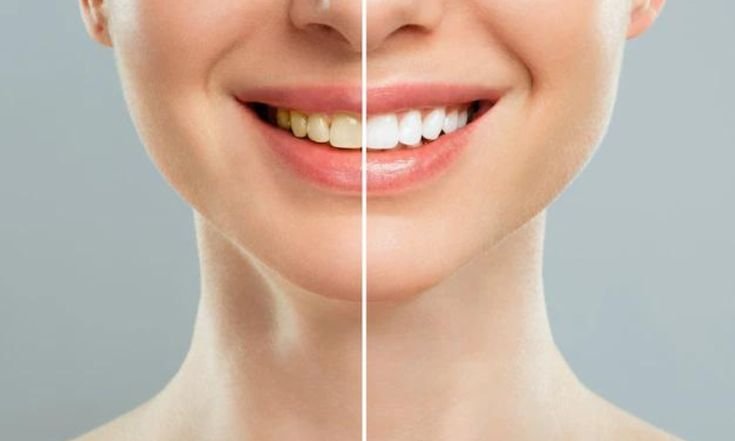Common Dental Problems in Pediatric Dentistry

7 Advantages of Professional Teeth Whitening Treatments
August 30, 2025
Joint Health in Monsoon: Why Pain Worsens, Common Problems, and Tips
August 30, 2025Good oral health during childhood lays the foundation for a lifetime of healthy teeth and gums. Pediatric dentistry focuses on the prevention, diagnosis, and treatment of dental issues in children, from infants to teenagers. Children’s teeth and gums are still developing, making them more prone to certain dental problems compared to adults. Identifying these issues early and seeking timely treatment is essential to avoid long-term complications.
In this blog, we will discuss the most common dental problems seen in pediatric dentistry, their causes, prevention, and treatment approaches.
1. Tooth Decay (Cavities)
Tooth decay is the most prevalent dental issue in children worldwide. It occurs when plaque bacteria feed on sugars from food and drinks, producing acids that erode the enamel. Baby teeth are more vulnerable to decay because their enamel is thinner than that of permanent teeth.
Causes of cavities in children include:
- Frequent consumption of sugary foods and drinks
- Inadequate brushing and flossing habits
- Lack of fluoride exposure
- Prolonged bottle-feeding or breastfeeding at night
Treatment options: Dentists may recommend fluoride treatments, fillings, or in severe cases, crowns for baby teeth. Preventive care such as dental sealants can also help reduce the risk of cavities.
Prevention: Encourage children to brush twice daily with fluoride toothpaste, limit sugary snacks, and schedule regular dental check-ups.
2. Gum Disease (Gingivitis and Periodontitis)
Although gum disease is often associated with adults, children can also suffer from gingivitis and even early stages of periodontitis. Gingivitis in children is characterized by swollen, red gums that bleed during brushing or flossing.
Contributing factors include:
- Poor oral hygiene
- Plaque buildup along the gumline
- Certain health conditions such as diabetes
- Hormonal changes during puberty
Treatment: Early gum disease can usually be reversed with professional cleanings and improved oral hygiene at home. Severe cases may require deep cleaning or special mouth rinses prescribed by a dentist.
Prevention: Teach children proper brushing and flossing techniques and encourage them to rinse their mouths after meals.
3. Tooth Sensitivity
Children often complain about tooth pain when consuming hot, cold, or sweet foods. This sensitivity may result from enamel erosion, cavities, gum recession, or cracked teeth.
Signs of sensitivity:
- Discomfort when eating ice cream or drinking cold water
- Avoidance of brushing certain areas due to pain
- Sudden sharp pain while chewing
Treatment: Dentists may recommend desensitizing toothpaste, fluoride varnishes, or fillings to cover exposed areas.
Prevention: Use a soft-bristled toothbrush, avoid acidic foods and drinks, and maintain regular dental care.
4. Malocclusion (Improper Bite)
Malocclusion refers to misaligned teeth or jaws, commonly seen in children. It can manifest as crowded teeth, overbite, underbite, or crossbite.
Causes of malocclusion:
- Prolonged thumb sucking or pacifier use
- Genetics and inherited jaw size
- Early loss of baby teeth
- Tongue thrusting habits
Why it matters: Malocclusion can affect speech, chewing efficiency, and overall facial appearance.
Treatment: Orthodontic evaluation is recommended around the age of 7. Treatment may involve braces, retainers, or other orthodontic appliances.
5. Thumb Sucking and Pacifier Use
Thumb sucking is a natural reflex in infants, but prolonged habits beyond age 4–5 can cause dental issues. Continuous sucking pressure can push the teeth forward, leading to open bites or other alignment problems.
Effects of prolonged thumb sucking:
- Changes in the shape of the upper jaw
- Improper alignment of permanent teeth
- Speech difficulties
Prevention and intervention: Positive reinforcement, gentle reminders, and in some cases, orthodontic appliances can help break the habit.
6. Tooth Eruption Problems
Children may face delays in tooth eruption, crowding, or impacted teeth. In some cases, baby teeth may not fall out on time, blocking the growth of permanent teeth.
Signs of eruption issues include:
- Visible permanent teeth growing behind baby teeth (“shark teeth”)
- No signs of tooth eruption past the expected age
- Pain or swelling around the gums
Treatment: Dentists may recommend extracting baby teeth or monitoring the child’s growth. In severe cases, surgical intervention may be needed.
7. Dental Trauma
Children are highly active, and accidental falls or sports injuries often lead to chipped, broken, or knocked-out teeth. Dental trauma can affect both baby teeth and permanent teeth.
Types of dental trauma in kids:
- Chipped or fractured teeth
- Avulsed (knocked-out) teeth
- Injuries to gums and soft tissues
Treatment: Prompt dental care is crucial. For a knocked-out permanent tooth, place it in milk and rush to a dentist immediately. Baby teeth, if knocked out, usually aren’t replanted, but professional assessment is necessary.
Prevention: Wearing mouthguards during sports and supervising children during play can reduce the risk of dental trauma.
8. Early Tooth Loss
Some children lose baby teeth earlier than expected due to decay, trauma, or gum disease. Premature tooth loss can cause spacing problems, leading to misalignment of permanent teeth.
Treatment: Space maintainers may be used to hold the place for the permanent tooth until it erupts.
Prevention: Regular dental visits and preventive care can help avoid early tooth loss caused by decay or infection.
9. Bad Breath (Halitosis)
Persistent bad breath in children may signal underlying dental problems such as poor oral hygiene, cavities, gum disease, or tonsil infections.
Causes of bad breath:
- Food particles stuck between teeth
- Dry mouth due to dehydration
- Dental infections or abscesses
- Mouth breathing habits
Treatment: Addressing the root cause is essential. Professional cleaning, improved oral hygiene, and hydration can help resolve the issue.
10. Tooth Discoloration
Stains or discoloration in children’s teeth can result from poor oral hygiene, consumption of pigmented foods, excessive fluoride intake (fluorosis), or certain medications.
Treatment options: Professional cleaning, whitening treatments (for older children and teens), and fluoride management can restore a natural smile.
Prevention: Encourage children to brush properly and limit colored drinks like sodas or juices.
Importance of Pediatric Dental Visits
Regular dental check-ups help detect problems early and keep children’s teeth healthy. Dentists can provide preventive treatments such as fluoride varnishes, sealants, and professional cleanings. They can also offer guidance to parents on diet, oral hygiene techniques, and managing harmful habits.
If you are looking for expert pediatric dental care, the best dental hospital in Gurgaon offers specialized treatments and child-friendly care to ensure a comfortable experience for young patients.
Final Thoughts
Pediatric dentistry plays a vital role in safeguarding children’s oral health. From cavities and gum disease to misaligned bites and dental trauma, children are prone to a wide range of dental issues. Addressing these problems early through preventive care, timely treatment, and regular dental visits ensures a healthy smile that lasts a lifetime.
Parents should encourage good oral hygiene habits at home, provide a balanced diet, and schedule routine dental check-ups. With the right approach, most common dental problems in children can be effectively prevented or managed, allowing them to grow up with strong, healthy teeth.



